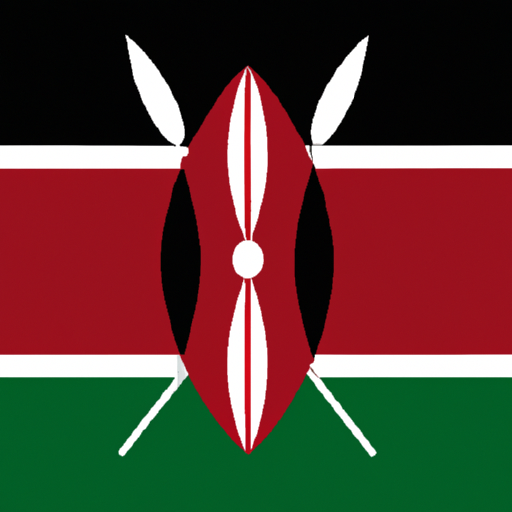In this article, we will explore the historical timeline of Kenya’s transition into a one-party state and uncover the underlying reasons behind this significant political shift. From the formation of the Kenya African National Union (KANU) to the controversial amendments made to the constitution, we will examine the key events that shaped Kenya’s political landscape. By delving into the motivations driving this transformation, we aim to provide a comprehensive understanding of how and why Kenya became a one-party state.
When Did Kenya Become a One-Party State?
Overview of One-Party State in Kenya
A one-party state refers to a political system where only one political party is legally allowed to exist and hold political power. In the case of Kenya, it became a one-party state in the early years following its independence from British colonial rule. The dominant political party during this era was the Kenya African National Union (KANU), led by Jomo Kenyatta and later Daniel arap Moi. This article will provide an overview of the one-party state era in Kenya, including its definition, context in African politics, the leadership of Kenyatta and Moi, and the eventual fall of the one-party state.
Definition of a One-Party State
A one-party state is characterized by the absence of political pluralism, where only one political party is allowed to operate legally. This results in a monopoly on power, as the ruling party has control over all political institutions and decision-making processes within the country. In a one-party state, opposition parties are either banned or severely restricted, limiting political competition and diversity of ideas. The ruling party exercises significant influence over society, and individuals within the state are expected to align with and support the party’s ideology and policies.
Context of One-Party State in African Politics
The emergence of one-party states was a common trend in post-colonial Africa during the mid-20th century. Many African countries gained independence from colonial rule around this time, leading to the formation of new governments and the struggle to establish political stability. One-party states often emerged as a response to the challenges of nation-building, as the ruling parties sought to consolidate power and maintain stability in newly independent nations. Additionally, the influence of Cold War politics, with the United States and the Soviet Union vying for influence in the region, further shaped the dynamics of African politics and contributed to the prevalence of one-party states.
Jomo Kenyatta and the Formation of KANU
Jomo Kenyatta, a prominent figure in the Kenyan nationalist movement, played a critical role in the formation of the dominant political party, the Kenya African National Union (KANU). KANU was established in 1960 by merging two nationalist groups, the Kenya African National Union and the Kenya Independent Movement. Kenyatta emerged as the leader of KANU, and the party enjoyed widespread support and influence, positioning itself as the driving force behind Kenya’s independence movement.
KANU’s Dominance in Early Post-Independence Politics
After Kenya gained independence from British colonial rule in 1963, KANU played a significant role in shaping the country’s political landscape. With Jomo Kenyatta as Kenya’s first president, KANU enjoyed a dominant position in politics, winning the majority of seats in parliament and effectively becoming the ruling party. As the sole political force, KANU attracted members from diverse ethnic backgrounds and sought to promote national unity and development under the leadership of Kenyatta.
Kenyatta’s Leadership
During his tenure as president, Jomo Kenyatta actively worked towards consolidating his power and ensuring the dominance of KANU. He implemented measures that restricted opposition parties and curtailed political pluralism. The government enacted laws and regulations that stifled dissent, curtailed freedom of speech, and limited opposition parties from challenging KANU’s authority. Kenyatta’s leadership style emphasized strong centralized control, with loyalty to the ruling party placed above individual rights or freedoms.
Daniel arap Moi’s Rule and Consolidation of One-Party State
Upon Jomo Kenyatta’s death in 1978, Daniel arap Moi succeeded him as the president of Kenya. Moi continued the one-party state system, further consolidating KANU’s power and suppressing opposition movements. During his rule, Moi tightened control over political institutions, the media, and civil society, effectively silencing dissent and reinforcing the dominance of the ruling party. His regime was characterized by authoritarianism, human rights abuses, and a lack of political freedoms.
Repression and Suppression of Opposition
Under Moi’s rule, political opponents, activists, and critics of the government faced severe consequences. Opposition movements were met with repression, including arbitrary arrests, detention without trial, and harassment. Human rights abuses were rampant, and freedom of speech and expression were severely curtailed. Moi’s regime utilized state-controlled propaganda to maintain its grip on power and suppress any challenges to the one-party state system.
Fall of the One-Party State in Kenya
Despite the repression and suppression faced by opposition movements, the one-party state in Kenya began to face increasing pressure for political reforms. The emergence of opposition parties, civil society movements, and pro-democracy advocates led to calls for a more inclusive and democratic political system. International pressure and the changing global political landscape also played a role in pushing for political openness in Kenya.
Emergence of Opposition Movements
In the 1980s and 1990s, opposition movements and pro-democracy advocates began to gain momentum in Kenya. Other political parties and civil society groups emerged, challenging the dominance of KANU and demanding political reforms. These opposition movements, such as the Forum for the Restoration of Democracy (FORD), proposed a multi-party system as an alternative to the one-party state.
Introduction of Multi-Party Democracy
In response to the growing pressure for political reforms, President Moi announced in 1991 that Kenya would reintroduce a multi-party system. This move was met with both excitement and skepticism, as many doubted the government’s commitment to genuine democratic reforms. The reintroduction of multi-party democracy allowed for the establishment of opposition parties, enabling greater political participation and competition.
Pressure for Political Reforms
The pressure for political reforms continued to mount in Kenya, both from within the country and internationally. Pro-democracy activists, civil society organizations, international bodies, and Kenya’s own citizens demanded greater political freedoms, transparency, and accountability. These calls for reform led to increased scrutiny on the one-party state system and further undermined its legitimacy.
Repeal of One-Party State Constitutional Provision
In 1991, a constitutional amendment was introduced to repeal the provision that designated Kenya as a one-party state. A referendum was held to gauge public opinion on the proposed amendment, and the majority of voters supported the repeal. With the repeal of this provision, Kenya formally ended its status as a one-party state, ushering in a new era of multi-party democracy.
Referendum on the Constitution
The referendum held in 1991 was a significant milestone in Kenya’s transition from a one-party state to a multi-party democracy. It provided an opportunity for Kenyan citizens to express their views on the proposed constitutional amendments, which aimed to dismantle the legal framework underpinning the one-party state system. The referendum allowed for public participation and engagement, reflecting a shift towards a more inclusive and democratic political process.
Adoption of Multi-Party System
Following the repeal of the one-party state constitutional provision, Kenya effectively transitioned into a multi-party system. Opposition parties were now legally recognized and could participate in political processes, competing in elections and advocating for their respective policies and ideologies. The adoption of a multi-party system marked a significant turning point in Kenya’s political history, striving towards greater political inclusivity, pluralism, and democratic governance.
In conclusion, Kenya became a one-party state shortly after gaining independence in the early 1960s. The dominant political party, KANU, under the leadership of Jomo Kenyatta and later Daniel arap Moi, exercised control over political institutions and suppressed opposition. However, mounting pressure for political reforms, both domestically and internationally, eventually led to the repeal of the one-party state provision and the introduction of a multi-party system. This transition marked a significant shift towards political inclusivity and greater democratic governance in Kenya.

